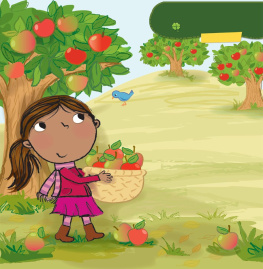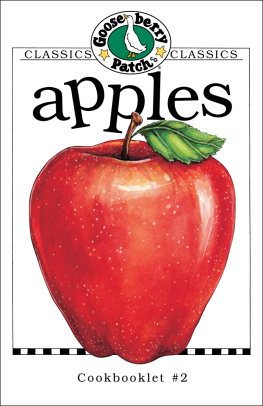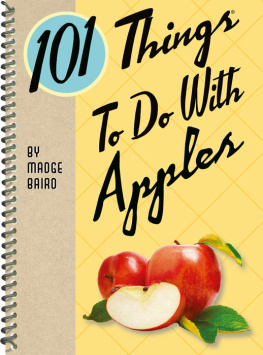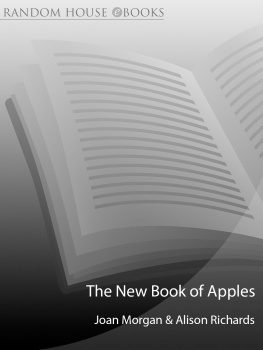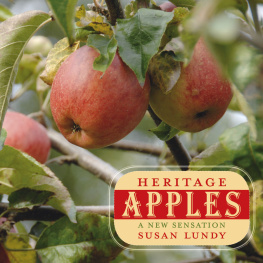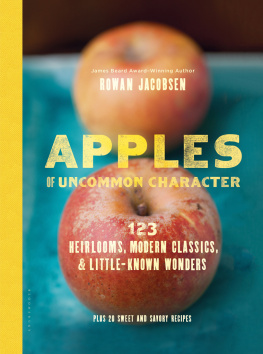An old apple tree near the authors home is a survivor of the orchards that grew on nearly every New York and New England farm in the 19th century.
Introduction: Backyard Apples

T hree old apple trees, the survivors of an unknown orchard, still grow around my mid-nineteenth-century home in upstate New York. I dont know how old they are or what kind of apples they bear. Their history is as mysterious as their unpredictable apple production, bountiful one year and barren the next, yet full of fragrant blossoms each spring. During the occasional seasons of bounty, my husband and I pick bushels of apples from the two trees close to the house and peel and slice them, carefully carving around the occasional worm. Small and mostly misshapen, they pale in comparison to the shiny red orbs in supermarket bins, but they add a delicious tang to apple sauce and sweetened desserts. The third tree, a tall, solitary figure in the meadow across the road, has not been pruned for generations, and its broad, twiggy head becomes a cloud of white blooms each May. It is a milestone in our landscape and a welcome sign of renewal. One of its largest branches, thicker than a mans thigh, has split off the main trunk. Bent like an elbow with its broad forearm resting on the ground, it still lives and sends up new shoots and buds every spring. The meadow grasses grow around it, and by the end of summer when the apples appear, the thicket is so dense that only deer can taste the fruit.
This trio of trees is a remnant of apple history, a microcosm of the orchards that grew on nearly every New York and New England farm in the nineteenth century. They are the distant descendants of European transplants introduced in the early years of colonial settlement. But their story is much older than the orchards of America or Europe, and the tale is still unfolding. Both meat and drink, apples have been a staple of the human diet for millennia. Eaten out of hand, baked into pies and tarts, boiled into sauce, butter and jelly, pressed for cider and juice, distilled into brandy, vinegar and wine, and dried for a long-term food supply, they have sustained, delighted and intoxicated people throughout the world. The pruned branches of the tree were also put to good use for the intricate parts of early machines, the cogs, wheels and shuttles. Small branches, aromatic long after cutting, were turned into spoons to stir apple sauce and churn butter. From the time of Charlemagne to Johnny Appleseed, Americas apple evangelist of the nineteenth century, planting apple trees was a requirement for new settlements. It not only provided food and wood, but also helped people to put down roots, investing in the future of their new towns.
Commercial cultivation has become a global enterprise, with America and China as the largest producers, yet small orchards still have fresh apples for sale at their own farms, as farmers nearly everywhere did centuries ago. I buy apples from several small orchards within a short drive of our home, eagerly awaiting the start of each autumn when the fruit snaps with taste. For years I avoided supermarket apples, particularly the omnipresent Red Delicious. Shaped like fat teeth, they are not at all toothsome, usually too sweet and cottony after months in cold storage. This staple of the school cafeteria has come to represent everything that went wrong with modern apple breeding. But I have seen apple cultivation change within my own lifetime, from the mass production of a handful of uniform varieties to the increasing appearance of apples with improved taste and texture. Australias Granny Smith, New Zealands Gala, Japans Fuji, Minnesotas Honeycrisp and several other recent introductions and especially the growing number of small orchards reviving heirloom apples (those dating back at least 50 years and still untouched by modern breeding) are finally giving the Red Delicious serious competition.
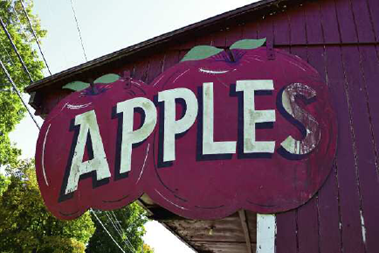
An old sign at a Vermont apple orchard that has been operated by the same family for several generations.
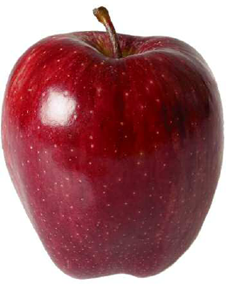
Red Delicious apples, temptingly red and shiny, nonetheless usually reach the market bland and mealy.
Yet supermarket choices are still limited, and shoppers face higher prices for the tastier apples. My market carries more than a dozen kinds of apple, plus a few organic alternatives a better selection than the two or three standards of the 1960s, but nowhere near the thousands of varieties available before the apple became a corporate product. In the autumn, when trees in the nearby orchards are dotted red with apples, the supermarket also offers bags of the local fruit along with those that have travelled thousands of miles across the country and from other continents.
But finding a tasty, healthy apple is still a challenge. I was disheartened to read a supermarket sign from one major producer boasting that its latest variety had reached the top of the apple sweetness chart, the pinnacle known as supersweet. Even apples, supposedly the healthy alternative to junk food, are part of Americas unrelenting promotion of sugary food. And the push towards ever-sweeter apples has made a mockery of an apple a day keeps the doctor away, since the sweetest apples often have the fewest nutrients.
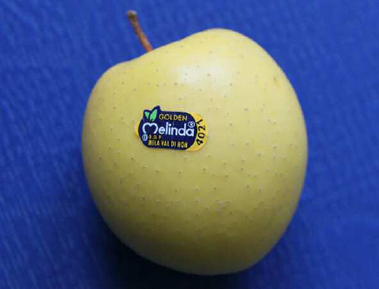
Golden Delicious, one of the worlds most popular apples, has fewer nutrients than many other varieties, according to a U.S. study in 2003.



